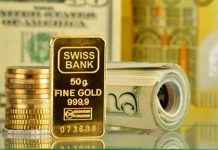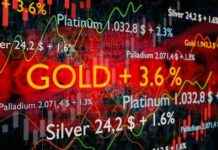Is Gold Set to Break Records? A Deep Dive into the Current Trends
Gold has proven its ability to continue growing and reaching new historical peaks in recent years, even in an environment of high interest rates. The high interest rates are a result of high inflation, which has supported the demand for investment gold. However, with inflation on the decline and central banks cutting rates or preparing to do so, the question now arises: will gold be able to sustain its growth and reach new historical peaks far beyond current levels? The fundamental situation, upcoming interest rate cuts, the US presidential election, and the ongoing geopolitical tensions in the world all play a role in determining the future trajectory of gold prices.
Demand for gold has been weak in recent quarters, with data from the second quarter of 2024 showing a significant decline. Jewelry demand is at its lowest since 2020, and overall demand is the lowest since 2021. The weak demand can be attributed to the economic slowdown during the pandemic. Jewelry demand typically accounts for over 50% of gold demand in a quarter. In comparison to the average jewelry demand of around 550 tonnes per quarter in 2010, the previous quarter saw only 410 tonnes of demand, with total demand in a quarter amounting to just 929 tonnes, below the usual 1,000-tonne mark. The decline in demand can be attributed to high prices, a strong dollar, and economic uncertainty in China. However, the upcoming wedding season in India is expected to boost demand, especially with the decrease in import duties on gold in the country, which should further stimulate demand in the second half of the year.
Despite the weak overall demand, investors are not deterred. Investment demand for physical bars and coins remains strong, along with demand from central banks, which currently make up over 50% of gold purchases on the market. Central banks have been increasing their gold purchases in recent years due to economic and geopolitical uncertainties, as well as a desire to diversify away from the US dollar. While the People’s Bank of China paused its gold purchases after more than two years of consistent buying, other central banks have not decreased their purchases. The National Bank of Poland has emerged as a significant player in the gold purchase market, with notable purchases in recent months to diversify and increase gold reserves.
ETF funds have also played a crucial role in driving gold purchases. The creation of gold ETF funds around 20 years ago has made it easier for investors to access the gold market without buying physical gold. The positive correlation between gold prices and ETF purchases has been evident, with investors flocking to gold ETF units, especially during periods of interest rate cuts. The return of ETFs to gold purchases could significantly impact market demand and potentially reverse the recent oversupply situation.
Lower interest rates typically result in more money circulating in the market, potentially leading to higher inflation. Gold, being a finite asset, tends to appreciate in value over the long term as its supply grows at a slower rate than the money supply. Historical data shows that gold prices have consistently risen following the first interest rate cut by the Fed in the past four decades, with an average gain of around 20% over two years. Seasonal trends also point towards potential increases in gold prices, with historical data showing positive performance for gold in most months, despite a slump in September due to market factors like portfolio rebalancing and Fed decisions.
The year 2024 presents a unique set of circumstances for gold, with the US presidential election and policy decisions by candidates potentially influencing the precious metals market. While uncertainties surrounding tariffs and spending plans may impact gold prices in the short term, the long-term prospects for gold remain positive. Factors like elevated inflation and continued investment demand from central banks and ETFs contribute to a bullish outlook for gold. The heavily overbought stock market further underscores the appeal of gold as a hedge against volatility in other assets.
Looking ahead, gold investors are optimistic about the future potential for gold prices to reach new records. With historical data showing limited corrections in gold prices during periods of interest rate cuts and the potential for double or triple increases akin to other commodities, the outlook for gold remains promising. While short-term fluctuations and profit-taking may occur, the long-term trajectory for gold prices appears to be on an upward trend, with the potential for prices to reach unprecedented levels in the coming years. As investors continue to diversify their portfolios and seek safe-haven assets, gold is likely to remain a valuable investment option in the ever-changing global economic landscape.




